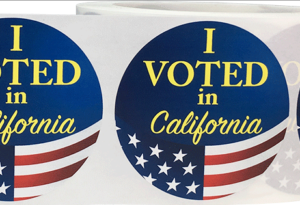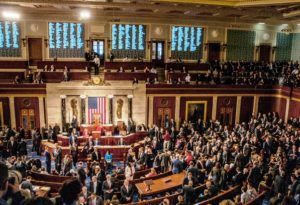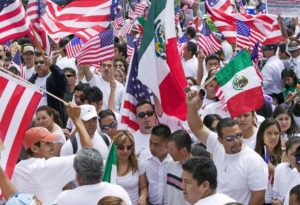Posts Tagged: elections
Podcast
California political data guru Paul Mitchell joins Capitol Weekly’s John Howard and Tim Foster to talk about — what else? — the 2020 elections. Who’s up, who’s down and who’s burning through their dough?
News
There are plenty of things to look at now that California counties have updated their voter files with the 2018 general election vote history. This is our first chance to see what really happened, as opposed to what people thought had happened based on the outcomes.
Podcast
Here it is, Dec. 11, and the final count of ballots cast in California’s Nov. 6 general election was certified less than a week ago. And, as Jim Brulte and Kevin McCarthy have sadly noted, many GOP Election Night “wins” fell to Democrats as the final votes were tallied.
News
A number of California’s Republican-held House seats face fierce challenges from Democrats, and the tally of votes in these tight races may not be completed for days, even weeks, following the election. That’s the message in Capitol Weekly’s survey of more than 20,000 mail-in voters across California who cast their ballots prior to election day.
News
A Capitol Weekly survey of California’s early vote-by-mail balloting shows Democrats Gavin Newsom and Dianne Feinstein ahead by double-digit margins in their races for governor and U.S. Senate, respectively. Regarding three of California’s most controversial ballot propositions, the most closely divided was Proposition 6, which would repeal the state’s newly imposed fuel tax: 42 percent opposed the repeal, 38 percent favored it.
Analysis
Literally minutes after Donald Trump’s election in 2016, political pundits, consultants and prospective candidates started a march toward the mid-term elections. The expectations were set extremely high, with Democratic hopes of taking back the House of Representatives led, in part, by a huge gain in the limited number of remaining Republican-held congressional seats in California.
News
With the close of the 2018 primary election cycle, we get another chance to see how campaigns have evolved under California’s top-two open primary system. The most noteworthy change appears to be the manner by which campaigns are extending their reach across the partisan aisle. But they are not doing it in the way that the authors of the Top Two Candidates Open Primary Act, which took effect in 2011, intended.
News
What’s in a name? When it comes to social media, maybe a lot more than you think. There is a move in the Capitol to force social media companies such as Twitter and Facebook to identify “bots,” those robot-like, automated accounts that move through the internet and interact with real people — and each other.
News
One of the ongoing themes in analyzing California’s 2018 elections is the impact of the reforms that were enacted in 2012 – the state’s open primary, the extension of term limits and the new district lines drawn by the state’s independent redistricting commission. Beyond these three, we also saw the creation of statewide online voter registration and a ballot measure to allow passage of an on-time state budget by a simple majority vote. This wave of reforms has made it incredibly difficult to discern the impact of each.
News
California’s growing Latino population is numerically strong but traditionally under-performs at election time – and that may have as much to do with economics as with politics. “The bottom line: If you see a growing Latino middle class, you will see a growing Latino representation in government,” said Mike Madrid, a veteran political strategist and author of a study by the newly formed California Latino Economic Institute.










